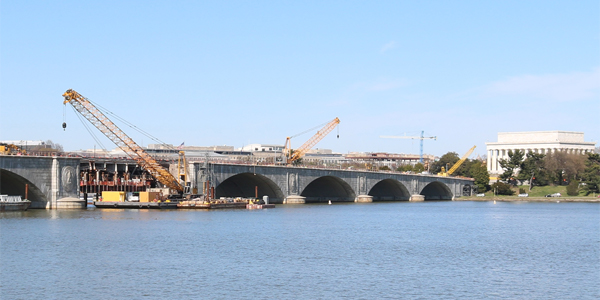Pace of bridge repairs hits five-year low

Analysis by road builder group shows that, at the current rate, fixing all of America's structurally deficient bridges would take 80 years.
If America's structurally deficient bridges were placed end to end, they'd span nearly 1,100 miles, the distance between Chicago and Houston, a new examination of federal government data shows. According to an analysis by the American Road & Transportation Builders Association (ARTBA), 47,052 bridges are classified as structurally deficient and in poor condition.
Although the number of structurally deficient bridges in America is actually down slightly compared with 2017, the pace of improvement has slowed to the lowest point since ARTBA began compiling the report five years ago. The association estimates the cost to make the identified repairs at nearly $171 billion.
To prepare the report, ARTBA researchers analyzed information from the U.S. Department of Transportation's recently released 2018 National Bridge Inventory (NBI) database. Among other findings, their study revealed that the states with the largest number of structurally deficient bridges are Iowa (4,675 bridges), Pennsylvania (3,770), Oklahoma (2,540), Illinois (2,273), Missouri (2,116), North Carolina (1,871), California (1,812), New York (1,757), Louisiana (1,678), and Mississippi (1,603). The most-traveled structurally deficient bridges are found on parts of Route 101, Interstate 405, and Interstate 5 in California, where daily crossings are as high as 289,000 per day. Some 1,775 of the nation's structurally deficient bridges are on the interstate highway system.
The report comes as Congress and the Trump administration continue debating the best way to fund national transportation infrastructure projects. The DOT's Highway Trust Fund (HTF) has been the source, on average, of more than 50 percent of the highway and bridge capital investments made annually by state transportation departments. However, the HTF is facing major financial difficulties. Absent congressional action, states could see a 40-percent cut in federal investment beginning in 2021.
"At the current pace, it would take more than 80 years to replace or repair the nation's structurally deficient bridges," said Dr. Alison Premo Black, the ARTBA chief economist who conducted the analysis, in a statement. "America's bridge network is outdated, underfunded, and in urgent need of modernization. State and local government just haven't been given the necessary resources to get the job done," she said. "The best way to 'bridge' the infrastructure investment gap is for Congress and the Trump administration to provide a permanent revenue solution for the federal Highway Trust Fund," added ARTBA President Dave Bauer in the statement.
Resources Mentioned In This Article
Related Articles
- Shippers won't blow their freight budgets in 2019, Coyote predicts
- Port of New York and New Jersey posts record Q1 cargo volume
- Kuebix, Emerge partnership expands load-matching service
- Survey finds trade, tariffs still top business concern
- Economy continues to cool, but danger of full freight recession dims, ACT says
Join the Discussion
After you comment, click Post. If you're not already logged in, you will be asked to log in or register.
Feedback: What did you think of this article? We'd like to hear from you. DC VELOCITY is committed to accuracy and clarity in the delivery of important and useful logistics and supply chain news and information. If you find anything in DC VELOCITY you feel is inaccurate or warrants further explanation, please ?Subject=Feedback - : Pace of bridge repairs hits five-year low">contact Chief Editor David Maloney. All comments are eligible for publication in the letters section of DC VELOCITY magazine. Please include you name and the name of the company or organization your work for.





